When you think of the word “bundling,” I’m sure you think of several layers of clothing to protect yourself from the cold. Or, more likely nowadays, getting your internet, cable and cell phone all under one contract. In Colonial America, Bundling was the practice of putting a courting couple together in bed for the night, fully clothed, to get better acquainted before marriage. It was considered an acceptable way for two young people to spend the night.
A theory for this respectability comes from the story of Ruth and Boaz from the Bible. According to most articles and books I’ve read about bundling, Ruth and Boaz spent the night together on the threshing room floor. The story as written in the Bible has Ruth sneaking in after Boaz has fallen asleep then sleeping at his feet. Her mother-in-law told her this was the way to get Boaz to marry her. Boaz even states that he doesn’t want anyone to know that a woman has entered the threshing room. Not sure why this makes bundling acceptable, but people are known to very loosely interpret the bible when it’s convenient.
The practice of bundling came over to the states with the first colonists. There are some writings still around that talk about the use of bundling in the UK and Holland. The earliest mention in the states goes back to 1634. Bundling, also called Tarrying, gave a young couple the opportunity to spend time together in an intimate setting. Something that NEVER happened in the 17th and 18th century. Keep in mind that during this time you didn’t get to choose who you married, your parents did. You married to align families, to access other resources like land or livestock, or just to make sure you married into a family with wealth, prestige, or adequate resources. Back in the UK and Europe, this was the way everyone approached marriage unless you were dirt poor and had nothing to exchange.
In the new world, you had the added pressure of extremely limited resources. Marriage was more about survival. Couples needed to have children to increase the workforce and build up their wealth and property. This survival culture is most likely why bundling is mentioned more in the prosperous 1700’s than the struggling 1600s. The more people had to offer, the more they had to bargain in exchange for marriage. It was all about coupling finances and property, and the woman was also considered property.
Despite the limited resources, Puritan’s practiced this tradition more than the Virginia settlers. More families settled in New England than in Virginia, which mostly consisted of single men for the first couple of years. This difference meant that while Puritan settlers didn’t have much when they arrived in the new world, they were more apt to keep their marriage traditions from back home. Marriage was decided between fathers and involved discussions of dowry and inheritance, even if there wasn’t much with which to negotiate.
A man with resources (or a man from a family with resources) was able to meet his intended beforehand instead of just meeting each other on the altar. This meeting often meant a long trip requiring an overnight stay. Needing to spend the night gave young couple an opportunity to spend it together with the intention of getting to know each other through late night conversation. To ensure there wouldn’t be any hanky panky, they would not only be clothed but have a barrier between them. Sometimes it was a board that went down the length of the bed (bundling board) or a large pillow (bundling bolster) down the middle, or put in a sack (bundling bag) that could be sewn or tied shut to prevent them from removing it. The rest of the family went to bed, and the young folk were left alone if there was room enough in the house to be left alone.
This practice seemed to be more common in New England. Puritan’s weren’t as conservative as you would think, at least as compared to their Catholic counterparts of the time. Yes, life and work were all for the glory of God, all rules came from the Bible, and sex was not allowed outside the confines of marriage. A significant difference was the Puritan’s belief that sex should be enjoyable to insure pregnancy. If a couple was not having sex or if the husband could not perform his duties, the marriage was annulled. Perhaps this is why bundling seemed like a good idea rather than being thought of as immoral. By giving the couple a chance to warm up to each other, they could ensure a prosperous marriage not only in wealth and property but also in progeny.
Early Americans even thought the practice was practical. Travelers were allowed to bundle with their daughters as a way to save money. This way expensive fuel wasn’t wasted to warm another room, or the room they were in for that matter. Not only could the soon to be betrothed whisper in the dark to save candles, but the traveling salesman could also bundle up with someone to conserve expensive firewood. This economic necessity is most likely why the practice seems to be limited to rural areas.
Despite all its practicalities, things did not always go as planned. There were times when the young lovers crossed the bundling board, or they managed to get free of the sack. When comparing marriage records with birth records, by the late 18th century at least 30 to 40 percent of colonial brides were already pregnant on their wedding day. Surprisingly, as long as they were getting married it didn’t seem to matter. It’s even suspected that if the bride was pregnant before marriage that bit of bundling could prove the paternity of the child as indisputable. The bundling young man had to be the father, making any accusations or need for proof unnecessary. Just marry the girl, and all is forgiven.
Not everyone was cool with bundling. There have been published rants from the clergy. Jonathan Edwards preached against it in the early 1730’s. In 1781, Reverend Jason Haven even outed some people in the congregation while preaching against the practice. In 1809, Washington Irving mentioned it in his Knickerbocker’s History of New York as a “superstitious rite practiced by the young people of both sexes.” and points out “…that wherever the practice of bundling prevailed, there was an amazing number of sturdy brats annual born unto the state.” Bundling stayed around much longer than most clergy and sophisticated city dwellers liked. The custom spread from New England to New York and Pennsylvania then across the Midwest. There is some evidence that the Amish and Mennonites also practiced the custom for some time.
The custom fell out of favor quicker than you think. It stuck around for a long time but wasn’t very popular after the early colonies became prosperous. By the 19th century, it was still around but rare. You can find people talking about it as late as the 1930’s with stories about bundling “among the plain people.” Being thought of as only practiced by “plain” people will hurt any custom’s popularity.

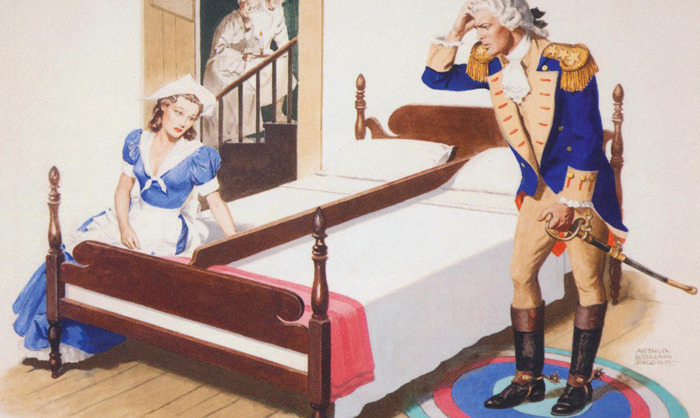
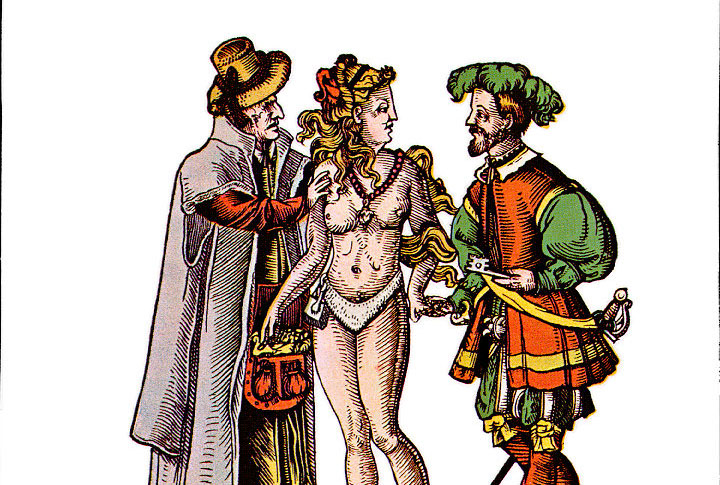
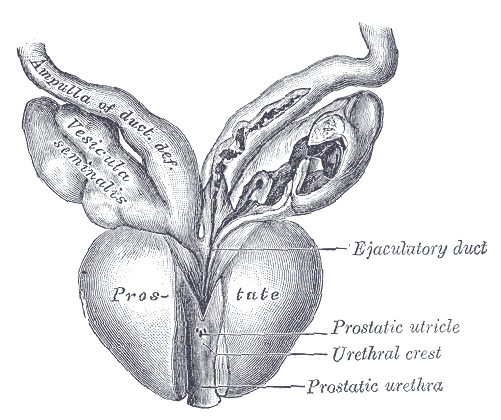
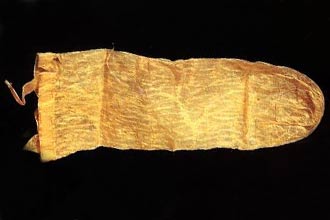
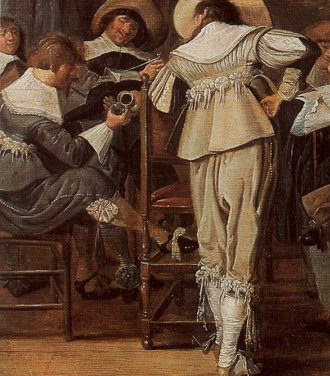
![By Dvortygirl (Own work) [CC BY-SA 3.0 (http://creativecommons.org/licenses/by-sa/3.0) or GFDL (http://www.gnu.org/copyleft/fdl.html)], via Wikimedia Commons](http://www.sexualhistorytour.com/wp-content/uploads/2016/05/Yarndoll11-e1462228166739.jpg)
